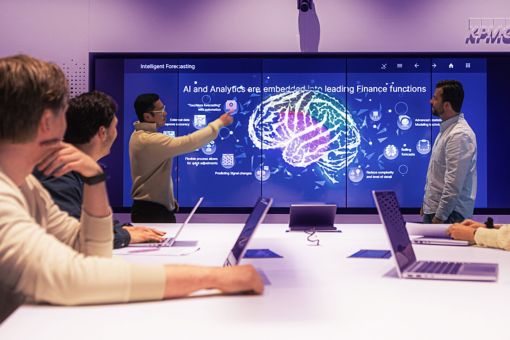Artificial Intelligence (AI) is currently one of the most discussed technologies. Organizations are investing heavily in AI tools such as ChatGPT, Perplexity, and Le Chat. Despite the availability of advanced technologies, success is not guaranteed. Technology alone is not sufficient; the real challenge lies in involving employees in this transformation.
AI Culture within Organizations
The process of AI integration within organizations is complex. Employees may be enthusiastic about the possibilities of AI but are sometimes restricted by organizational guidelines. Conversely, organizations may be ambitious in their AI goals, while employees still have doubts about the impact on their roles or the reliability of AI.
The Algoritme Vertrouwensmonitor survey reveals that trust in AI among Dutch people is low, with a score of 5.3 on a scale of 10. Only 35% of Dutch people actively use generative AI. Young people use AI more than older people, but the percentage remains low. This explains why many organizations struggle with AI adoption. How do you get people excited about something they may not trust or understand? And how do you ensure that employees feel safe using this technology? Here are some critical success factors:
Factor 1: Create Opportunities
The implementation of AI begins with the so-called enable phase. This phase focuses on creating opportunities and removing barriers. It starts with awareness: employees need to understand what AI is, what it can do, and how they can safely apply it in their daily tasks. Some recommendations that can help with this:
- Communicate clearly about what is allowed and what is not within the organization. Which tools are permitted and why do certain restrictions apply? This prevents confusion and builds trust in the process.
- Ensure access to tools that are at least as good as external tools. This prevents employees from using external, potentially unsafe tools against the rules.
- Provide not only the right tools, but also practical support. By offering training, courses, and workshops, employees are guided in the process of embracing AI.
Factor 2: Ensure Leadership with Empathy and Vision
In addition to creating the right opportunities, leadership plays a crucial role. It is not only about technical implementation, but also about guiding people through change. Leaders should set a good example by openly using AI tools. When leaders show trust in the technology, employees will follow more quickly. Transparent communication and motivating employees to use the offered training and support are essential.
Factor 3: Build Trust
Trust is crucial in establishing an AI culture. But how do you build trust?
- Create a safe learning environment where experimentation is encouraged and mistakes are allowed. Employees should feel free to try new technologies without fear of negative consequences.
- Start with small-scale projects that deliver quick results. Begin with simple applications such as automatic reporting or predictive analytics. Show how AI can support and that there is no intention to replace employees.
- Conduct open conversations about concerns such as: "Will AI take over my job?" or "What does this mean for my role within the organization?" These questions touch on fundamental fears among employees and should not be ignored. By being transparent about how AI is used and how it creates opportunities, these concerns can be alleviated and trust built.
Patience is Essential
Developing an AI culture requires a step-by-step approach that ultimately leads to substantial changes. It is important to build on successes from pilots and expand them to other departments or processes within the organization. It is crucial not to move too quickly without creating sufficient support among employees. Hasty implementation can lead to resistance or distrust towards the technology.
Artificial Intelligence is intended to enhance human capabilities, not to replace them. It functions as a partner or colleague in solving problems and making better decisions. It is essential to focus on employees, build trust, support them, and work together towards change. This creates a culture where growth and collaboration between humans and technology are central. For a successful AI transformation, both technology and people are indispensable.




